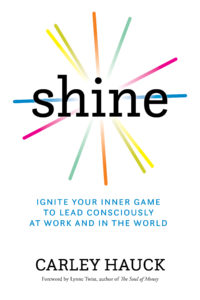How much trust does your organization experience? That’s the first question I ask when I do a culture assessment with the businesses I serve. Trust is the essential ingredient and foundation for all relationships and businesses. Unless leaders build trust, they can’t build anything that will succeed for the long term, and any kind of organizational change will be seriously challenged.
Organizational scholars define trust as our willingness to be vulnerable to the actions of others because we believe they have good intentions and will behave well toward us. In other words, we let others have power over us because we don’t think they’ll hurt us; we think they’ll help us and have our backs. When the trust level is high within coworker relationships, it corresponds to trusting the company that employs us, and we feel confident it won’t deceive us or abuse its relationship with us.
But what are the mechanics of this? How do we trust? In order to trust someone, especially someone who is unfamiliar to us—which means we haven’t had the opportunity to develop trust yet—our brains build a model of what the person is likely to do and why. And there’s a lot going on beneath the surface; we use both mindfulness and empathy during every collaborative endeavor. This means both people in an interaction are always assessing, Should I trust you? How much do you trust me? Some of us are innately trusting, naturally seeking positive intent and putting we, before me. But in my experience, trust is earned. This is why it matters that we as leaders build trust with those we lead. It is not wise to trust someone blindly until you have vetted that they are, in fact, trustworthy.
Trust and Safety Requires Nurturing
The level of trust in an organization is influenced by how much psychological safety exists. Do people feel safe voicing their honest opinions? Do they believe that any criticism aimed their way will be fair and that their response to it will be heard? Teams that enjoy high trust levels have been shown to be more creative and to come to decisions faster. They’re higher performing teams because they’re willing to admit mistakes and to call out problems and challenges and ask for help. If two teams are equally smart, why would a more trusting team be more productive than a less trusting one? Because they iterate faster. They learn faster. And why do they do that? Because they trust each other to be honest and point out the things they’re discovering in real time. A foundation of safety helps these team members understand and develop those discoveries quickly, collaborate smoothly, and cocreate with flow.
In the workplace, trust is highly influenced by leadership because leaders model the behaviors others will follow. When leaders lead with fear and dominance, trust and safety suffer in the long run. A boss who berates, threatens, or punishes you will affect your performance and ability to speak up authentically as you focus your attention on self-protection. This leads to feelings of “learned helplessness” as employees avoid the boss and/or remain as invisible as they can by doing the minimum. And face it: this kind of leadership behavior hurts, to the point of inflicting trauma.
Humans experience social rejection and social pain in the brain’s pain matrix for longer than they experience physical pain. Research in neuroscience has shown this. We are wired to connect and belong. If we lack the trust and safety that are essential to belonging, we feel that our very survival is threatened, which prolongs our suffering. To turn this around, we can consciously and actively work to create greater belonging using conscious leadership techniques at work and in the world. Belonging means belonging to yourself, as well as being connected to a purpose larger than yourself.
Authenticity In Action
Being authentic is one of the fastest ways to create psychological safety in the workplace.
Psychological safety is the sense that we can share our feelings, beliefs, and experiences openly with others at work without fear of reprimand, losing status, or punishment. Studies on psychological safety conducted in collaboration between Google and the Massachusetts Institute of Technology (MIT) found it to be one of the most important factors in creating successful teams and thus high performing, innovative organizations. This insight is the result of almost 30 years of research by Amy Edmondson. Psychological safety supports moderate risk taking, speaking your mind, creativity, and most importantly trust. In my work with teams and senior leaders, I assess the psychological safety of the individual leader, the team and the culture first.
Before leaders build trust through being courageous in our interactions with others, we need the courage to understand ourselves and what’s important to us. Try out this practice that focuses on cultivating this understanding.
A Mindful Practice to Deepen Your Inner Trust
Find a quiet space if you can and take out a journal. Take a minute or two to breathe and tap into your center. Now think of a recent experience you had with a partner, friend, family member, or coworker where you wanted to be authentic, but weren’t. Imagine pausing at the height of this interaction and asking yourself the following questions:
- What am I afraid would happen if I shared my thoughts and feelings with this person right now?
- How will I feel if I don’t share them?
- If I weren’t afraid, what would I most want to say to this person right now?
- How can I be even more open and vulnerable?
Cultivating Trust with Your Teams at Work
As leaders and managers, it’s important that we’re the first ones to model how to be authentic in the workplace. Josh Tetrick, cofounder and CEO of Eat Just, Inc., and I talked about his process of hiring for resilience and developing a resilient culture by leading with authenticity. First and foremost, Josh makes it clear in his communications what he cares about most. Eat Just’s mission is to increase the consumption of plant-based foods, to reduce animal maltreatment and forest degradation. Josh has found that the more confident he is in his mission and who he is, the more vulnerable and humble he can be when he makes mistakes.
He now recognizes that when Eat Just was just starting, he projected more self-assurance—to the point of arrogance—than he really felt because he wanted to sound more confident than he really was. But as he’s stepped into leading, he’s learned that he’s good at some things and not so good at others, and he knows and accepts that. This frees him from feeling the need to overcompensate and allows him to be his authentic self.
Josh let me in on some of the things he says when interviewing new hires: “This is the kind of company we are—this is the mission. If you gave me a 100% chance to get bought by an investor or a 20% chance to stay in the ring and get closer to achieving our mission, I’d choose the 20% probability.”
Then he tells potential new hires he wants them to ask themselves if they’re willing to get gritty, step into the unknown, and stay focused on that mission for the long haul. Sharing his truth upfront in this way weeds out people who aren’t the greatest fit for the culture. Josh takes the same approach with investors.
Josh also asks job candidates questions that are designed to assess their resilience, because he’s found that those who are the best fit for his company are inherently resilient. Josh offers a great example of how leaders build trust by cultivating a strong inner game of authenticity and sharing your truth and confidence as a leader on the outside.
Leading from authenticity sometimes means leading from vulnerability. According to Brené Brown, vulnerability entails uncertainty, risk, and emotional exposure. As a leader, you have the opportunity to create conditions that support naming the fears that come up around being vulnerable. Once they’re named, you can get past fear to the place where courage arises and encourage more confidence, teamwork, and connection.
Excerpt from the book Shine: Ignite Your Inner Game to Lead Consciously at Work and in the World by Carley Hauck © 2021 Carley Hauck, reprinted with permission from the author and the publisher, Sounds True, Inc.
READ MORE
Want to Really Help Others at Work? Talk About Your Failures
By being real with someone, it’s possible to create space for a different type of connection. Ryan Vaughn offers insight on why it’s important to foster authentic relationships in the workplace. Read More
4 Questions to Foster Your Authentic Self
When we fear that we can’t think and act as we truly are, we put parts of ourselves on hold. Here’s how we can begin to let go of expectations and pressures and tend to our wants and needs with kindness. Read More
Why Vulnerability is Your Superpower
Dr. Michael Gervais speaks with author and researcher Dr. Brené Brown about the relationship between vulnerability and courage, and what it takes to show up even when you can’t control the outcome. Read More












